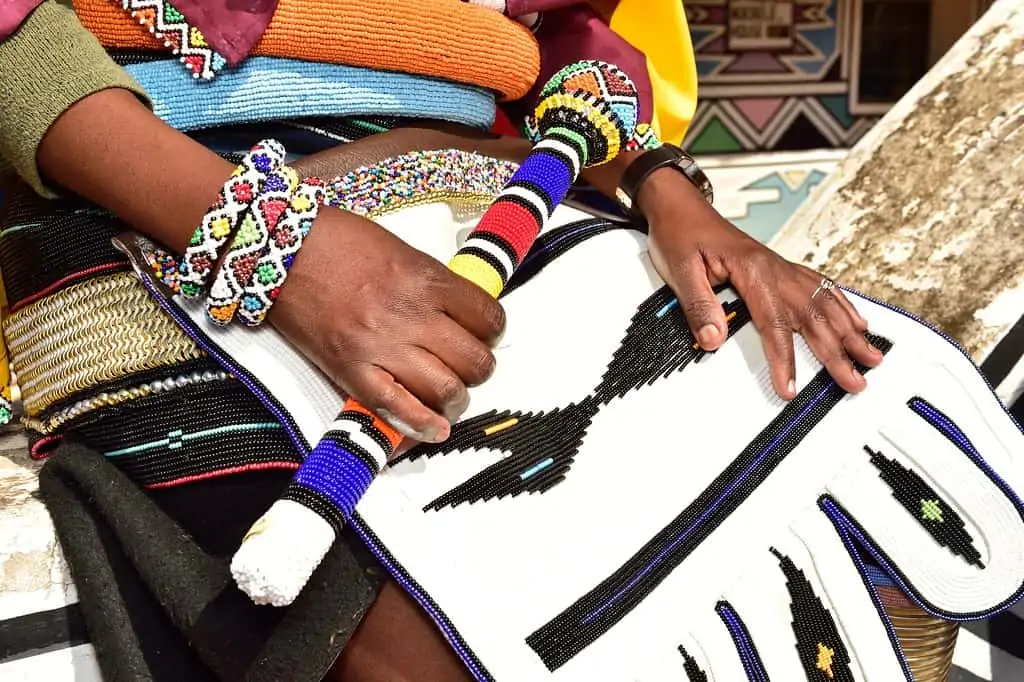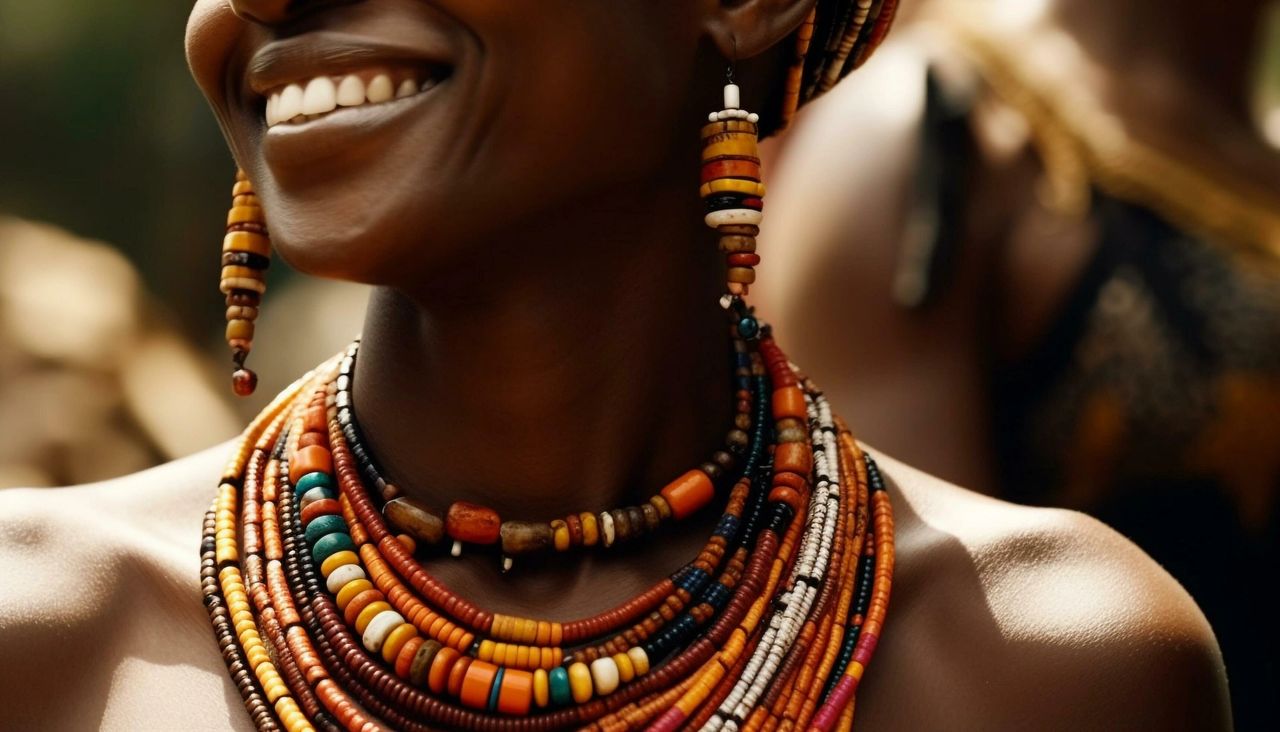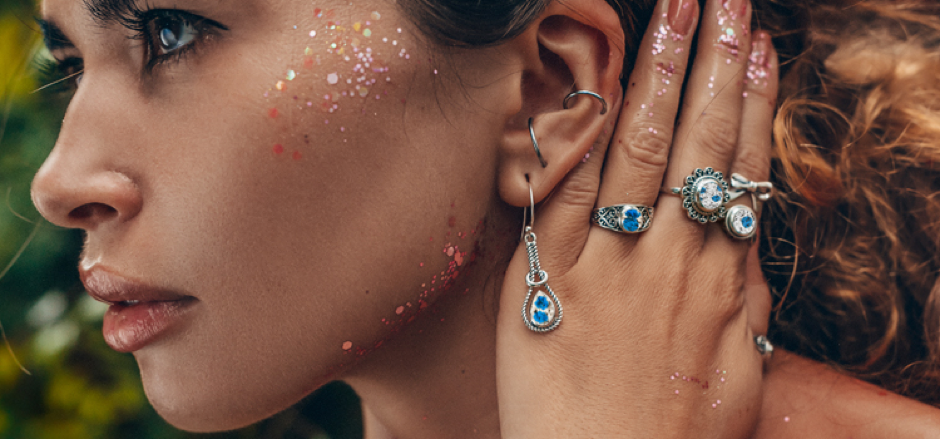When one envisions African culture, vibrant images of colorful garments and intricately designed adornments come to mind. Jewelry, in particular, has stood the test of time as both a celebration of craft and a repository of rich cultural narratives. The African jewelry pieces encapsulate centuries-old traditions, creating a unique blend of meaning, functionality, and beauty. These artifacts are not mere fashion items but potent symbols of identity, status, and community bonds cherished across generations. The diversity embedded in African jewelry indicates the continent’s plethora of cultures and societies.

Contents
- 1 Symbolism in African Jewelry: More Than Just Adornment
- 1.1 The Artistry and Craftsmanship of African Jewelers
- 1.2 The Impact of African Jewelry on Global Fashion Trends
- 1.3 Showcasing African Jewelry: From Local Markets to Global Exhibitions
- 1.4 The Economic Importance of the African Jewelry Industry
- 1.5 Preserving Tradition: Efforts to Keep African Jewelry Making Alive
- 1.6 The Influence of African Jewelry on Personal Identity and Expression
- 1.7 Conservation and Ethical Considerations in Jewelry Making
- 2 Conclusion: The Enduring Legacy and Continual Relevance of African Jewelry
Symbolism in African Jewelry: More Than Just Adornment
To understand African jewelry for exampple Africa necklace is to decipher a language of symbols where each motif, material, and color has a deliberate intent and communicates specific messages. In this sense, jewelry is a lexicon of cultural wisdom, encoding values, beliefs, and historical narratives. Gold, for example, is often associated with the sun and divinity in many African cultures, signifying a higher spiritual connection. Beads bring their spectrum of meanings, with different hues representing concepts such as fertility, bravery, and wisdom. This diverse symbology is integral in transforming simple objects into carriers of collective memory and identity.
The Artistry and Craftsmanship of African Jewelers
The hands of African jewelers are sources of alchemy—into each piece, they weave history, tradition, and soul. These skilled artists give life to inanimate objects, often utilizing locally sourced leather, bone, precious metals, and stones. Their tools and methods have been passed down, honed, and refined through countless generations, becoming as much a part of the art form as the final product itself. Jewelry making is more than an occupation; it is an expression of cultural pride and artisanship—a calling that has seen families maintain and preserve their legacy through their creations. A factor that distinguishes African jewelry is its connection to the natural world. Materials are selected for their availability, significance, and the messages they can convey. Ivory might suggest purity and connection to the elephant, a revered animal in many African societies, while shells can indicate wealth and the reach of trade networks. This symbiotic relationship with nature differentiates African jewelry and embeds each piece with a story specific to its region.
The Impact of African Jewelry on Global Fashion Trends
African jewelry has long transcended geographical boundaries to influence fashion and design sectors worldwide. As an emblem of innovation and diversity, it consistently inspires contemporary designers seeking to integrate global heritage into their work. The bold patterns, geometric shapes, and vivid colors intrinsic to African jewelry have found resonance with international audiences, contributing to a growing demand for these unique style elements. Major fashion capitals have observed African jewelry rise from ethnic niches to mainstream recognition. African elements have been reimagined to fit modern aesthetics while preserving their inherent storytelling capacity. This celebration of African artistry on fashion’s grandest stages signifies the blending of worlds and bolsters appreciation and desire for authentic designs.
Showcasing African Jewelry: From Local Markets to Global Exhibitions
African jewelry’s allure and cultural wealth are often first encountered within bustling local markets, hubs of craftsmanship where authenticity thrives. However, the narrative and reach of these pieces have expanded significantly, making waves in international exhibitions and cultural expositions. These bigger stages offer a space for storytelling through art, allowing broader audiences to engage with and learn from African cultural practices. They serve as both a celebration of creativity and a bridge to understanding the rich, often unwritten histories that each piece carries. Against the vast landscape of cyberspace, African jewelry also finds its audience. Virtual markets and social platforms have become instrumental in disseminating traditional African crafts to a global populace. Through online visibility, these creations gain the traction needed to sustain the artisans and the cultural legacies they represent while providing an opportunity for worldwide audiences to support the industry by acquiring these unique artifacts.
The Economic Importance of the African Jewelry Industry
For numerous African artisans, the jewelry trade is a vital source of income and a sustainable economic path. It enables them to harness their creative talents while providing for their families and investing in their communities. The trade-in jewelry, especially in tourist-favored regions, also helps to propel the local economy, showcasing the value and appeal of African culture. Despite dealing with contemporary challenges like global market pressures and changes in consumer preferences, artisans operate with resilience and adaptability. By balancing traditional values with cutting-edge designs, they preserve authenticity while appealing to new consumer generations domestically and abroad. Their continued engagement and evolution in the trade signify a dynamic industry that is well-poised to thrive in the current and future marketplace.
Preserving Tradition: Efforts to Keep African Jewelry Making Alive
As the world strides forward, the guardians of African jewelry-making recognize the importance of upholding the old ways and ensuring their passage to future custodians. Educational programs and apprenticeships are developed, allowing youth to delve into the ancestral knowledge and practical skills needed for jewelry craftsmanship. Such endeavors are designed to heighten awareness and respect for the art form, invigorating its practice among emerging generations. Protecting traditional African jewelry designs’ intellectual property and cultural sovereignty is another crucial preservation aspect. Legal frameworks and global movements provide a front against cultural appropriation, safeguarding the rights of original creators and their descendants. As artisans innovate within the parameters of tradition, they contribute to a vibrant and evolving tapestry of African art that remains rooted in historical context and cultural authenticity.
The Influence of African Jewelry on Personal Identity and Expression
Personal adornment with African jewelry is more than a fashion choice—it is a declaration of identity and cultural affiliation. The decision to wear signature pieces like beaded necklaces or metal armlets signifies a recognition of one’s roots, a connection to the ancestral lineage, and pride in one’s heritage. In the melting pot of global culture, donning traditional African jewelry is an act of self-affirmation, as each item bears a personal narrative interwoven with the larger story of a community or a people.
Conservation and Ethical Considerations in Jewelry Making
In an era where sustainability is paramount, the African jewelry industry is not immune to the calls for responsible practices. Ethical considerations such as fair trade standards and the impact on local ecosystems increasingly guide how jewelry is produced and sourced. There is a burgeoning movement within the industry towards adopting methods that honor the earth and its resources, with artisans and companies seeking to ensure that the creation of beauty is not marred by harm to the environment or exploitation of labor.
Conclusion: The Enduring Legacy and Continual Relevance of African Jewelry
As we bridge the gap between yesterday and tomorrow, African jewelry remains a vibrant testament to a culture that has weathered the passage of time and emerged with its essence intact. It stands as a beacon of continuity, artistic expression, and communal value, beckoning society to appreciate its beauty and engage deeply with its profound significance. In championing the vitality of the African jewelry tradition, the jewelers and the wearers play a part in ensuring that this dynamic art form endures for generations to come, remaining relevant in an ever-evolving cultural landscape.




